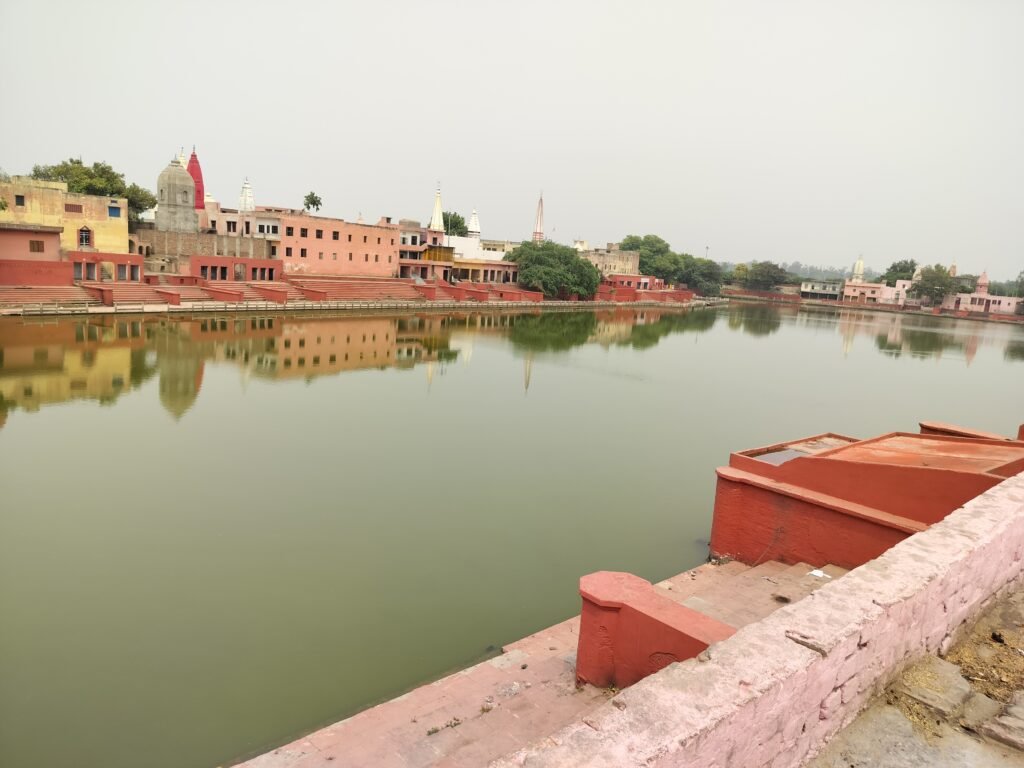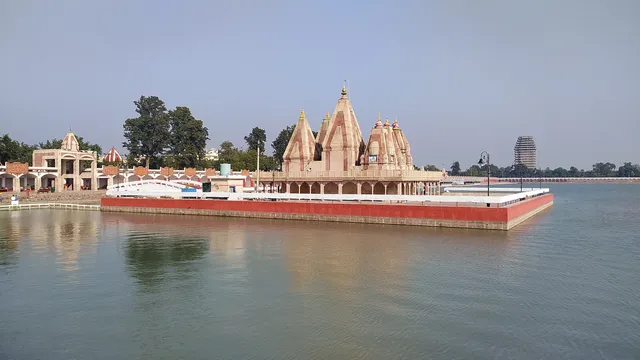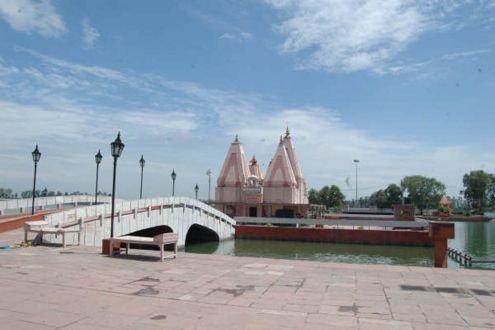Jind/Kurukshetra – In the heart of Haryana’s sacred landscape, the Pandu Pindara Tirth Sthal in Jind stands as a timeless link to the Mahabharata era. Now officially part of the 48 Kos Kurukshetra Pilgrimage Circuit, the site continues to draw thousands of devotees who come to perform pind daan for their ancestors, particularly on Somvati Amavasya.

Table of Contents
According to local tradition, the Pandavas halted at this site after the Kurukshetra war to offer pind daan before proceeding to the battlefield’s central sanctums. Over centuries, Pandu Pindara has become one of the western gateways to the sacred 48 Kos region, symbolizing both penance and continuity of dharma.
What is the 48 Kos Kurukshetra Pilgrimage Circuit?
The 48 Kos (approximately 144 km) Kurukshetra circuit encompasses a spiritual geography that extends beyond Kurukshetra city. The area includes more than 160 identified tirthas, spread across districts such as Jind, Kaithal, Karnal, Panipat, and Yamunanagar.
In Vedic and epic literature, these sites are linked to the Mahabharata war, Lord Krishna’s teachings, and the Vedic sages. Pandu Pindara, by virtue of its ritual importance, joins the ranks of the central Kurukshetra tirthas, forming part of the outer sacred ring of pilgrimage sites.
Also Read: Hagia Sophia Grand Mosque: A Sacred Convergence of Empires, Faiths, and Architecture
Key Tirthas: Spiritual Anchors of the Circuit
Brahma Sarovar
The Brahma Sarovar is among the most iconic pilgrimage destinations in India. Dedicated to Lord Brahma, it is said to be the spot where Brahma created the universe.
- Architecture: A monumental rectangular tank measuring roughly 3,600 × 1,500 feet, flanked by continuous ghats on all sides. A central island shrine is accessible by a narrow bridge.
- Significance: Bathing during Kartik Purnima and solar eclipses is believed to absolve sins. The Gita Jayanti Mahotsav held annually here transforms the site into a vibrant spiritual and cultural hub.

Sannihit Sarovar
Known as the confluence point of seven sacred Saraswati streams, Sannihit Sarovar is revered as the permanent abode of Lord Vishnu.
- Architecture: A circular sacred pond ringed by temples and ghats. Broad bathing steps accommodate the large number of pilgrims performing pind daan on Amavasya.
- Significance: Every Amavasya is considered spiritually powerful here, especially Somvati Amavasya, when the pond is said to hold the essence of all tirthas combined.

Jyotisar
Jyotisar is the philosophical heart of the Kurukshetra circuit. It is the very spot where Lord Krishna delivered the Bhagavad Gita to Arjuna before the battle began.
- Features: The legendary banyan tree (Vat Vriksha) still stands, symbolizing the eternal wisdom of the Gita. The Krishna–Arjuna chariot sculpture and light-and-sound show recreate the spiritual drama for visitors.
- Significance: Every Gita Jayanti, Jyotisar becomes the focal point of international celebrations, drawing pilgrims, scholars, and tourists alike.

Development and Preservation Efforts
The Haryana Tourism Department and local administrations are working to restore and enhance these sacred sites while maintaining their spiritual integrity.
- At Pandu Pindara, recent works include new ghats, clean water inflow systems, improved drainage, rest facilities, and safety measures.
- At Brahma Sarovar, embankments have been reinforced and lighting systems upgraded for nighttime events.
- At Jyotisar, pathways, interpretation centers, and heritage landscaping have been introduced to improve visitor experience without disturbing its historic character.
District authorities emphasize that development is aimed at balancing heritage preservation with modern pilgrim facilities, ensuring that the sacred ambience remains intact.
Also Read: Humayun’s Tomb: The First Great Mughal Garden Mausoleum
Editorial Perspective
The 48 Kos Kurukshetra Circuit is more than just a collection of temples and tanks—it is a living heritage landscape that binds together mythology, architecture, and community identity. Sites like Pandu Pindara, Brahma Sarovar, Sannihit Sarovar, and Jyotisar not only carry spiritual weight but also present a model for heritage-linked sustainable tourism.
As Haryana invests in the revival of its sacred geography, these tirthas continue to serve as a reminder that the stories of the Mahabharata are not just history—they are still woven into the cultural and physical fabric of the land.
